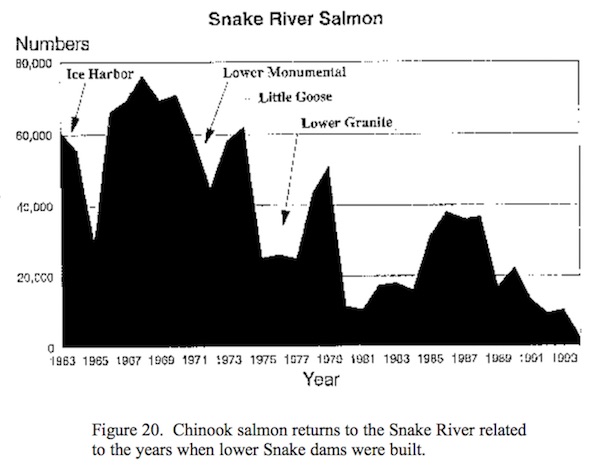forum
library
tutorial
contact

Northwest Hydropower System
Provides Hope in Climate Fight
by Kurt Miller
East Oregonian, July 10, 2021
|
the film forum library tutorial contact |

|
Northwest Hydropower System
by Kurt Miller
|
 Those of us who live west of the Rockies are all too familiar with the profound East Coast bias in the media. From sports to politics, or even business, if it happens outside of New York or Washington, D.C., the national media tends to ignore it.
Those of us who live west of the Rockies are all too familiar with the profound East Coast bias in the media. From sports to politics, or even business, if it happens outside of New York or Washington, D.C., the national media tends to ignore it.
Even within our own corner of the country, we're still required to follow Washington with the word "state" or the media will assume we mean the nation's capital.
The East Coast bias, however, doesn't seem to apply when it comes to natural disasters. Last summer's historic wildfires across California and Oregon and this summer's record-obliterating heat waves along the West Coast and Inland Southwest have received plenty of attention.
Recent national headlines have noted dried-up reservoirs, curtailed hydropower and havoc-wrought Western states. One article noted the best chance the West may have to avoid deadly heat waves is if deadly wildfires create enough smoke to block out some of the sun.
That's a pretty dark take on what we can expect from the climate crisis.
But, there are some rays of metaphorical sunshine in the climate fight coming from the Pacific Northwest. Perhaps that's a bit ironic for a region known for its rainy, gray skies. But, it's actually our abundance of rain that provides us with a clear environmental advantage, thanks to Northwest hydropower.
While the reservoirs behind dams in Nevada and California have gotten to levels so low it threatens their ability to produce electricity, the Northwest is in a much different position. Near the headwaters of the Columbia River Basin in Canada, water supply levels are near their historical average. Even downstream on the lower Columbia River, the seasonal water supply is about 80% of normal.
While poor water supply years can and do occur in the Pacific Northwest, scientists are quick to point out that climate change will affect our region much differently than our neighbors to the south. In fact, mega-droughts are not anticipated for the Columbia River Basin at all.
Instead, scientists at the University of Washington Climate Impacts Group anticipate the Northwest will see about the same amount of annual precipitation under likely climate change scenarios.
The rub is that much of the precipitation that historically has fallen as mountain snow in the winter will likely fall as mountain rain in the future, due to warming temperatures. This change means that much less water will be stored as a snowpack for the spring runoff. This is problematic for juvenile salmon because they count on robust river flows during the spring and early summer to help their journey to the ocean. It's also not good news for farmers who rely on the river to irrigate their crops.
Fortunately, our hydropower system is able to capture much of that runoff in large reservoirs, like the ones at Grand Coulee Dam in Washington, Dworshak Dam in Idaho and Hungry Horse Dam in Montana. These reservoirs are ideally positioned to help shape the timing of the river flows to help with salmon migration, power production and irrigation.
A peer-reviewed study from Pacific Northwest National Laboratory showed that it's not just the big dam reservoirs that can help salmon, but also dams with smaller reservoirs, like those on the mid-Columbia, lower Snake, and lower Columbia rivers. The research demonstrated the pools of water behind smaller dams warm more slowly than a shallow, free-flowing river. This thermal inertia effect provides a layer of protection from extreme summer temperatures.
Of course, perhaps the most important benefit our hydropower system provides is its ability to help fight climate change in the first place. The Pacific Northwest boasts the least carbon-intensive electric grid in the nation, with approximately 50% of its electricity coming from hydropower. In addition, our hydropower resources, which can store and release water to control energy production, act as a buffer for the ups and downs of wind and solar power, making it much easier to add these important renewable resources to the grid.
While we are undoubtedly experiencing genuine and unprecedented challenges, we're hoping the rest of the nation, including those in the "other" Washington (D.C.) will take note that at least one region in the West has a pretty good climate change plan.
learn more on topics covered in the film
see the video
read the script
learn the songs
discussion forum
